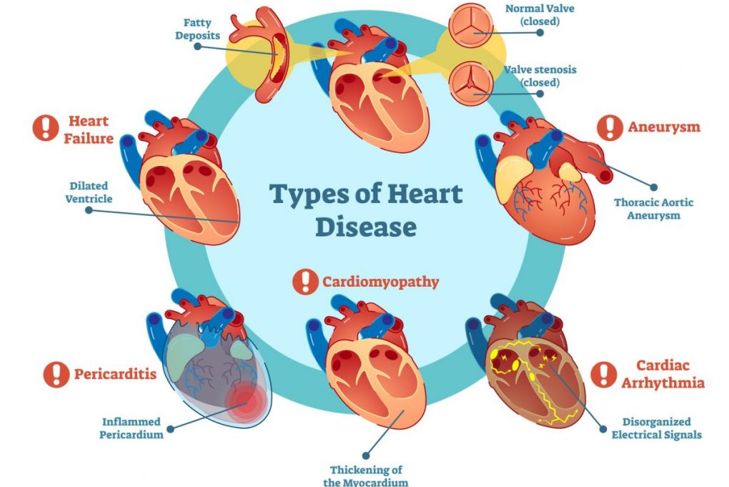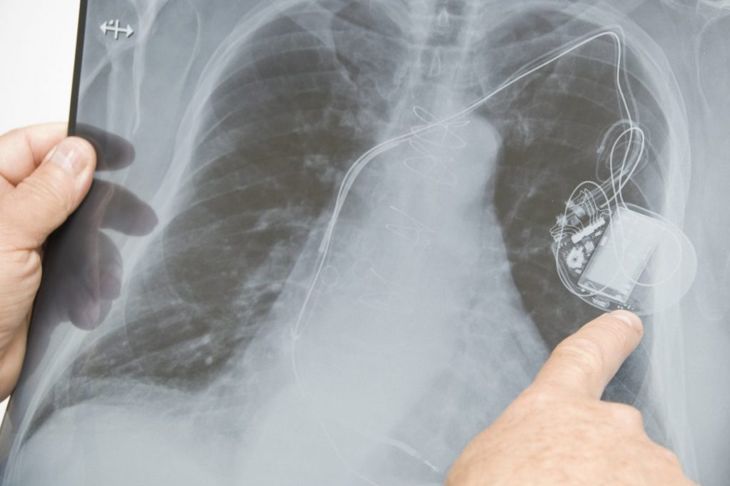Bundle branch block is an issue in the conduction system of the heart. The human heart contracts thanks to the sinoatrial node, which acts as a natural pacemaker, sending an electrical impulse through the heart. The impulse travels through the upper chambers before passing through the atrioventricular node. From this node, the impulse travels along a bundle that splits into the right bundle branch and the left bundle branch before eventually reaching the ventricles. Occasionally, a blockage will develop along one of these branches, leading to bundle branch block.
Left Bundle Branch Block
A left bundle branch block occurs when a blockage affects the left path. In many cases, the electrical impulse still reaches the left ventricle but is significantly slower than it should be. As a result, the left ventricle contracts slightly later than it should. Uncoordinated contractions between right and left ventricles mean the heart will pump blood less efficiently. For most people, this has no effect, but it can worsen other existing heart conditions.
Left Bundle Branch Block Subtypes
In addition to the traditional left bundle branch block, two partial blocks can also occur. Doctors often refer to a partial block as fascicular block; they can develop in the front or back half of the left bundle branch. These conditions are the left anterior fascicular block and the left posterior fascicular block, respectively. The same conditions that typically cause left bundle branch block can also cause both types of fascicular block. In general, left posterior fascicular block is rare.
Right Bundle Branch Block
Right bundle branch block is incredibly similar to left bundle branch block. It features the same uncoordinated contractions but affecting the right ventricle instead of the left. Notably, right bundle branch block is more common among older individuals and is rare in adolescents and young adults. In some cases, this is because of the natural degeneration that occurs due to aging. Like left bundle branch block, it can also occur in individuals with other heart conditions, causing those conditions to worsen. Rarely, right bundle branch block develops in healthy hearts.
Bifascicular Block
Some people develop multiple bundle branch blocks simultaneously, forming a bifascicular block. Because left posterior fascicular block is rare, it is more common for a person to have right bundle branch block and left anterior fascicular block. For some people, bifascicular block is asymptomatic and harmless. In other cases, moderate to severe symptoms develop due to the heart’s inability to pump blood efficiently.
Symptoms of Bundle Branch Block
Though most cases are asymptomatic, the two main symptoms of bundle branch block are presyncope and syncope. Presyncope is a general term that refers to a feeling of lightheadedness that can lead to fainting. Syncope is the medical term for fainting or passing out, usually due to insufficient blood flow to the brain. When left bundle branch block occurs alongside other heart conditions and causes more severe symptoms, it often most exacerbates shortness of breath and fatigue.
Causes of Bundle Branch Block
In general, bundle branch block is a common disorder that many people will never realize they have. Right bundle branch block typically only results from a medical condition that affects the right side of either the heart or the lungs. If a doctor discovers right bundle branch block, they will immediately look for other conditions such as cardiomyopathy, heart attacks, or heart disease. It is possible for right bundle branch block to develop in perfectly healthy individuals. Left bundle branch block is typically a sign of an underlying heart condition.
Risk Factors
Two primary risk factors may lead to bundle branch block. Older individuals are significantly more likely to develop left bundle branch block than younger people. The second primary risk factor is an underlying health problem. For bundle branch block, the most important underlying conditions are those of the heart and blood. High blood pressure often leads to the issues that cause bundle branch block. Right bundle branch block can also develop as a result of a surgical procedure on the heart, so individuals who have had heart surgery are also at risk.
Diagnosis
Doctors can use several tests to diagnose bundle branch block. The most common is an electrocardiogram or EKG, which can record the electrical impulses of the heart and discover irregular patterns. Depending on what pattern appears, doctors can discover the presence of bundle branch block and whether it affects the left or right side.
Pacemaker
In most cases, doctors do not directly treat bundle branch block. Instead, they treat any pre-existing heart disease or attempt to alleviate the issues that led to the secondary condition. If both bundle branches are blocked, doctors may install a pacemaker to help control heart rhythm. This ensures the heart will contract regularly and maintain efficient blood flow.
Cardiac Resynchronization Treatment
Patients who have both bundle branch block and dilated cardiomyopathy may receive a new treatment instead of a standard pacemaker. Cardiac resynchronization therapy uses a pulse generator and several insulated wires to help restore the normal timing of a heartbeat. There are two types of these devices. One is a special biventricular pacemaker. The other has a built-in cardioverter defibrillator that can help restore a normal heartbeat in patients at risk for sudden cardiac death.

 Home
Home Health
Health Diet & Nutrition
Diet & Nutrition Living Well
Living Well More
More




















